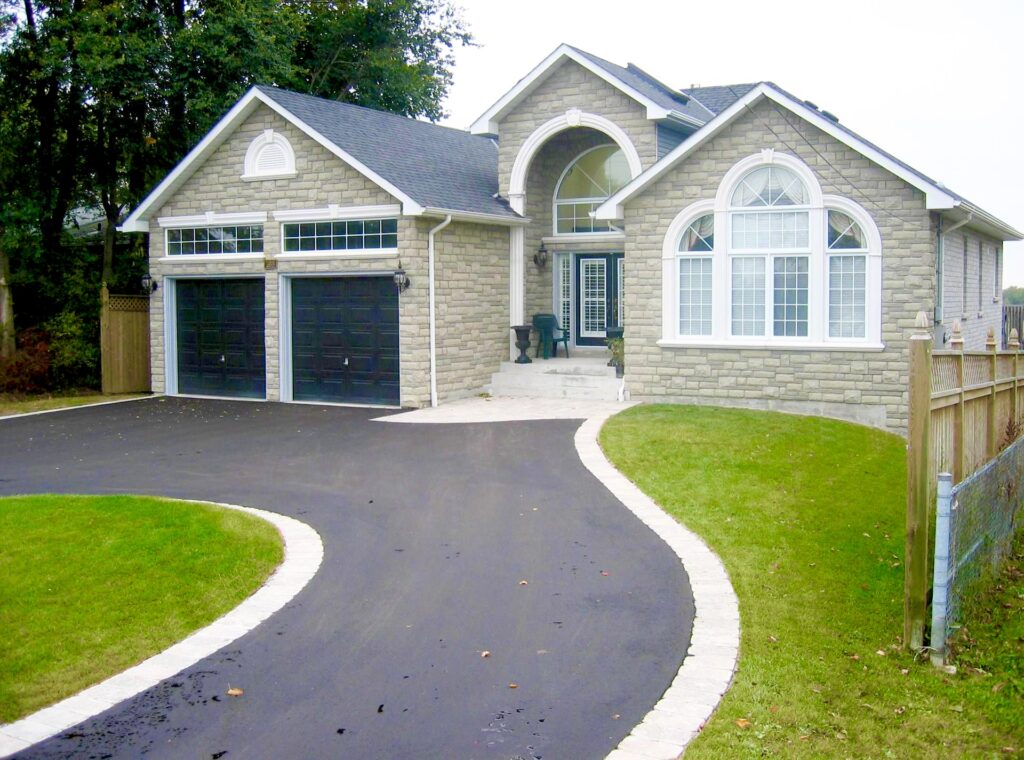DRIVEWAYS

Pavers and concrete are two popular materials used for outdoor flooring and paving. Both options have their advantages and disadvantages, and the choice between them ultimately depends on your specific needs and preferences.
Pavers are individual units made from various materials such as concrete, natural stone, or clay. They come in a wide variety of shapes, sizes, and colors, allowing for endless design possibilities. Pavers are easy to install and can be easily replaced if one gets damaged. They are also relatively low-maintenance, as they only require occasional cleaning and sealing to maintain their appearance and structural integrity.
Concrete, on the other hand, is a durable and long-lasting material that can be poured in any shape or size. It is an affordable option and requires very little maintenance. Concrete is also versatile, as it can be stamped, dyed, or textured to mimic the look of other materials, such as stone or brick.
When deciding between pavers and concrete, consider the following factors:
Cost: Pavers are generally more expensive than concrete, especially if you choose natural stone or premium materials. However, the installation cost can vary depending on the size of the project and the complexity of the design.
Design: Pavers offer more design options than concrete. You can create intricate patterns and designs with different colors and shapes of pavers. Concrete can be stamped or colored to mimic the look of other materials, but it cannot match the unique and varied look of natural stone or clay pavers.
Durability: Both pavers and concrete are durable and long-lasting materials, but pavers easy to repair and replace, concrete may crack with in a time and hard to repair.
Maintenance: Pavers require no maintenance possibly sealing to maintain their appearance and prevent weed growth. Concrete requires more maintenance, and it can crack over time due to freezing and thawing or heavy traffic.
In summary, pavers offer more design options and can be more visually appealing, but they are generally more expensive and looks more expensive. Concrete is a more affordable option that requires more maintenance and offers fewer design options. Ultimately, the choice between pavers and concrete comes down to personal preference, budget, and the specific needs of your project.

Blacktop, also known as asphalt, is a mixture of aggregates (such as stone, sand, and gravel) and a binding agent (usually asphalt cement or tar) that is used to pave roads, driveways, and parking lots.
The primary advantage of blacktop is its durability and resistance to heavy traffic and weather conditions. Blacktop is flexible and can withstand temperature changes and freeze-thaw cycles without cracking. It is also resistant to water and chemicals, which makes it an excellent choice for high-traffic areas.
Blacktop is also relatively easy and quick to install, and can be done in a matter of days. The installation process involves preparing the site by excavating and grading the area, laying a base layer of aggregate, applying a binder layer of asphalt, and finally, applying a top layer of asphalt.
In addition to its durability and ease of installation, blacktop is also relatively low maintenance. Regular sealing and filling of cracks can help prolong the life of the surface and prevent water from penetrating the pavement and causing damage.
One disadvantage of blacktop is its dark color, which can absorb heat and make the surface hot to the touch, especially in the summer months. It is also susceptible to damage from heavy equipment or sharp objects, which can cause cracking or gouging in the surface.
In summary, blacktop is a durable and long-lasting paving material that is ideal for high-traffic areas. It is relatively easy and quick to install and requires minimal maintenance. However, its dark color can make it hot to the touch in the summer, and it is susceptible to damage from heavy equipment or sharp objects.



